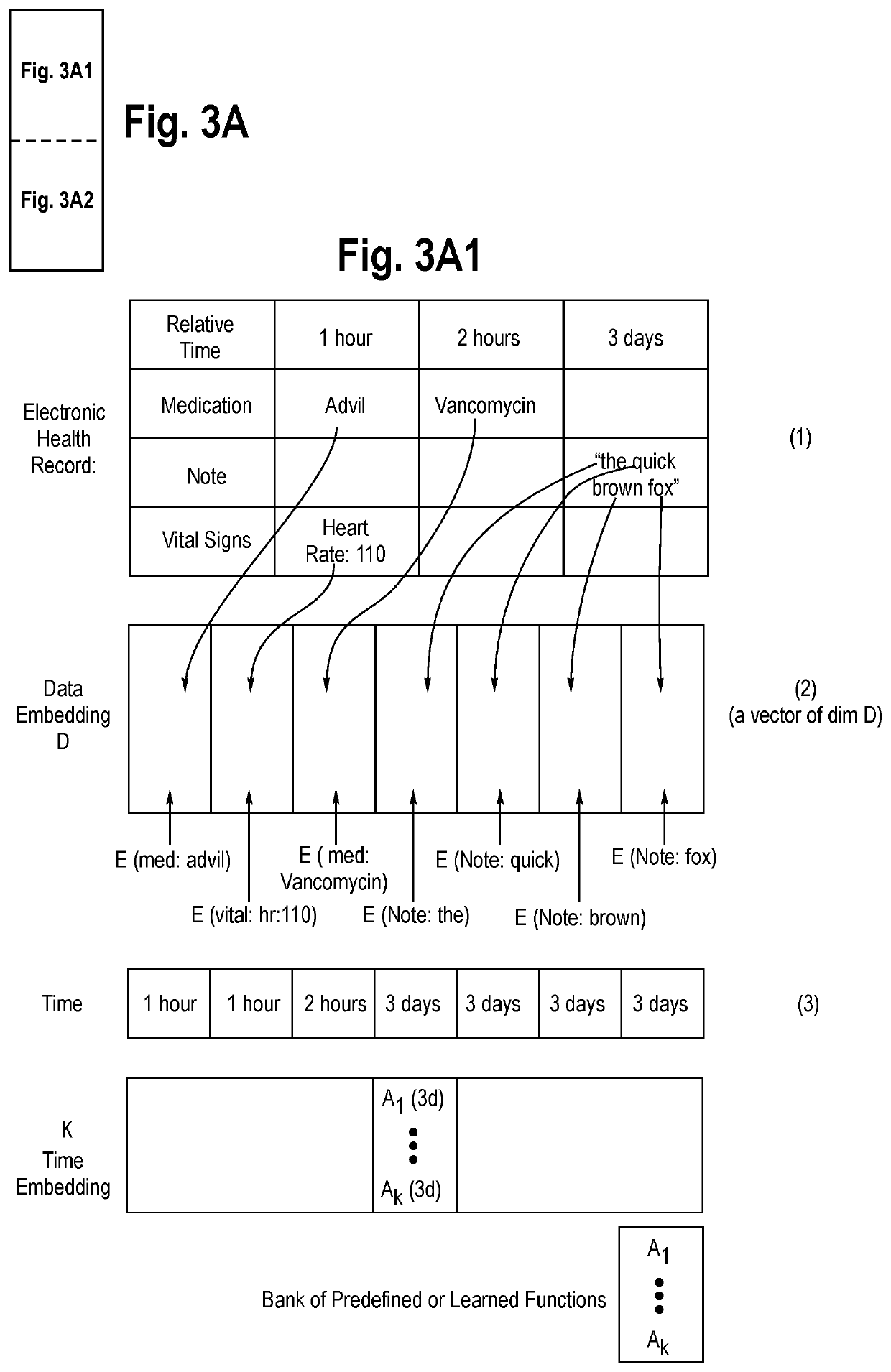System and method for predicting and summarizing medical events from electronic health records
a technology of electronic health records and medical events, applied in the field of system and method for predicting and summarizing medical events from electronic health records, can solve problems such as inconvenient deployment, inaccurate data generation, and inability to accurately predict the effect of medical events
- Summary
- Abstract
- Description
- Claims
- Application Information
AI Technical Summary
Benefits of technology
Problems solved by technology
Method used
Image
Examples
example 1
ens Today without the Benefit of this Disclosure
[0151]This hypothetical example will illustrate the difficulty in patient care without the benefit of the present disclosure.
[0152]Patient “Mark Smith” comes to the emergency room at 7 am for terrible abdominal pain. He has a full work-up, including labs and an abdominal ultrasound without a clear cause. His abdominal exam is relatively benign, but he still requires IV pain medications.
[0153]At 10 am, he is admitted to the internal medicine team for observation and pain control. The admitting team suspects non-specific gastritis, and they anticipate next-day discharge.
[0154]The primary team signs-out at 4 pm, handing over to a covering physician (responsible for 130 patients), and warning that: “Mr. Smith may develop alcohol withdrawal but there haven't been any signs yet.” At 8 pm, the covering physician signs-out all 130 patients to the night doctor, Dr. Kingsley. At 8 pm, Dr. Kingsley enters for her overnight shift. She is covering ...
example 2
Clinical Event of ICU Transfer and Delayed Discharge
[0172]This example will illustrate the benefits of the system of FIG. 1 in the treatment of the patient “Mark Smith” in Example 1. In summary, the system alerts the physician's attention early to patients at risk, by accurately predicting specific events; alerts them early, when they still have time to act, and explain why the system is making the prediction. Once they have the attention (for example by the use of the alerts of FIG. 8A) it helps the physician understand the patient now—what are the key problems, what are the conditions and other data that the physician might need to look at to make a decision, and not let them miss critical information.
[0173]In FIG. 14 an example of the interface 100 of the device of FIG. 3 tracking data and risks for four patients in real time. The physician has toggled the tools 108 to customize the tracking of risks or probabilities in real time. In FIG. 14, the interface includes four display a...
example 3
t Alerts of Risk of ER or Hospitalization
[0184]This example will explain the use of the system of FIG. 1 in an outpatient setting.
[0185]Jennifer Choi is an 83 year-old woman with a history of heart failure (EF 30%), atrial fibrillation on warfarin, hypertension and prediabetes, presenting as a new patient at Dr. Keyes' outpatient cardiology clinic. Dr. Keyes was asked to manage her heart-failure. Ms. Choi wants to make sure Dr. Keyes understands her other conditions to make sure none of the treatments interfere with one-another.
[0186]Earlier, Ms. Choi had her labs prior to a primary care physician (PCP) visit where she was noted to have mild acute-kidney injury. Her PCP felt her volume status was stable, so he decreased the dose of diuretics and recommended repeat labs in a week.
[0187]On the way out the door from the appointment with Dr. Keyes, Ms. Choi's daughter privately expressed concern that her mother was increasingly confused and was worried she may not be taking her medicati...
PUM
 Login to View More
Login to View More Abstract
Description
Claims
Application Information
 Login to View More
Login to View More - R&D
- Intellectual Property
- Life Sciences
- Materials
- Tech Scout
- Unparalleled Data Quality
- Higher Quality Content
- 60% Fewer Hallucinations
Browse by: Latest US Patents, China's latest patents, Technical Efficacy Thesaurus, Application Domain, Technology Topic, Popular Technical Reports.
© 2025 PatSnap. All rights reserved.Legal|Privacy policy|Modern Slavery Act Transparency Statement|Sitemap|About US| Contact US: help@patsnap.com



